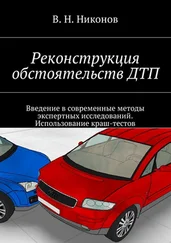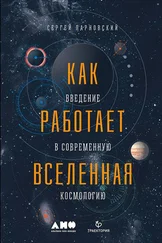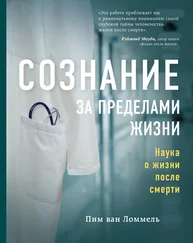Mollenhauer D. Adolf Pascher (1881–1945) — Romantic Phycologist // Protist , 2001, V. 152, № 3, 231–238.
Baldauf S. L. et al. A kingdom-level phylogeny of eukaryotes based on combined protein data // Science , 2000, V. 290, № 5493, 972–977.
Baldauf S. L. The deep roots of eukaryotes // Science , 2003, V. 300, № 5626, 1703–1706.
Adl S. M. et al. The new higher level classification of eukaryotes with emphasis on the taxonomy of protists // Journal of Eukaryotic Microbiology , 2005, V. 52, № 5, 399–451.
Keeling P. J. et al. The tree of eukaryotes // Trends in Ecology & Evolution, 2005, V. 20, № 12, 670–676.
Baldauf S. L. An overview of the phylogeny and diversity of eukaryotes // Journal of Systematics and Evolution , 2008, V. 46, № 3, 263–273.
Koonin E. V. The origin and early evolution of eukaryotes in the light of phylogenomics // Genome Biology , 2010, V. 11, № 5, 209.
Adl S. M. et al. The revised classification of eukaryotes // Journal of Eukaryotic Microbiology , 2012, V. 59, № 5, 429–514.
Леонтьев Д. В. Общая биология: система органического мира. Конспект лекций (издание 2-е). — Харьковская государственная зооветеринарная академия, 2014.
Алешин В. В. Филогения беспозвоночных в свете молекулярных данных: перспективы завершения филогенетики как науки // Труды Зоологического института РАН. 2013. Т. 317, приложение № 2, 9–38.
Simpson A. G. B., Roger A. J. The real ‘kingdoms’ of eukaryotes // Current Biology, 2004, V. 14, № 17, R693 — R696.
Keeling P. J. Diversity and evolutionary history of plastids and their hosts // American Journal of Botany , 2004, V. 91, № 10, 1481–1493.
Mullner A. N. et al. Phylogenetic analysis of phagotrophic, photomorphic and osmotrophic euglenoids by using the nuclear 18S rDNA sequence // International Journal of Systematic and Evolutionary Microbiology , 2001, V. 51, № 3, 783–791.
Marin B. Origin and fate of chloroplasts in the euglenoida // Protist , 2004, V. 155, № 1, 13–14.
Pringsheim E. G., Hovasse R. The loss of chromatophores in Euglena gracilis // New Phytologist , 1948, V. 47, № 1, 52–87.
Kolisko M. et al. A wide diversity of previously undetected free-living relatives of diplomonads isolated from marine / saline habitats // Environmental Microbiology , 2010, V. 12, № 10, 2700–2710.
Hongoh Y. et al. Genome of an endosymbiont coupling N2 fixation to cellulolysis within protist cells in termite gut // Science , 2008, V. 322, № 5904, 1108–1109.
Carpenter K. J., Keeling P. J. Morphology and phylogenetic position of Eucomonympha imla (Parabasalia: Hypermastigida) // Journal of Eukaryotic Microbiology , 2007, V. 54, № 4, 325–332.
Misof B. et al. Phylogenomics resolves the timing and pattern of insect evolution // Science , 2014, V. 346, № 6210, 763–767.
Sutherland J. L. et al. Protozoa from Australian termites // Quarterly Journal of Microscopic Science , 1933, V. 76, 145–173.
Wenzel M. et al. Identification of the ectosymbiotic bacteria of Mixotricha paradoxa involved in movement symbiosis // European Journal of Protistology , 2003, V. 39, № 1, 11–23.
Margulis L. The conscious cell // Annals of the New York Academy of Sciences , 2001, V. 929, № 1, 55–70.
Radek R., Nitsch G. Ectobiotic spirochetes of flagellates from the termite Mastotermes darwiniensis: attachment and cyst formation // European Journal of Protistology , 2007, V. 43, № 4, 281–294.
Brugerolle G. Devescovinid features, a remarkable surface cytoskeleton, and epibiotic bacteria revisited in Mixotricha paradoxa, a parabasalid flagellate // Protoplasma , 2004, V. 224, № 1, 49–59.
Wier A. et al. Spirochete and protist symbionts of a termite (Mastotermes electrodominicus) in Miocene amber // Proceedings of the National Academy of Sciences , 2002, V. 99, № 3, 1410–1413.
Заварзин Г. А. Роль комбинаторных событий в развитии биоразнообразия // Природа. 2002. № 1.
Красилов В. А. Нерешенные проблемы теории эволюции. — Владивосток: Дальневосточный научный центр АН СССР, 1986.
Keeling P. J. The endosymbiotic origin, diversification and fate of plastids // Philosophical Transactions of the Royal Society of London, B: Biological Sciences , 2010, V. 365, № 1541, 729–748.
Beakes G. W., Glockling S. L., Sekimoto S. The evolutionary phylogeny of the oomycete «fungi» // Protoplasma , 2012, V. 249, № 1, 3–19.
Turner A. Microscopical advances: the posterity of Huygens’ simple microscope of 1678 // ENDOXA , 2004, V. 1, № 19, 41–58.
Hadzi J. An attempt to reconstruct the system of animal classification // Systematic Zoology , 1953, V. 2, № 4, 145–154.
Leander B. S. et al. Molecular phylogeny and surface morphology of Colpodella edax (Alveolata): insights into the phagotrophic ancestry of apicomplexans // Journal of Eukaryotic Microbiology , 2003, V. 50, № 5, 334–340.
Obornik M. et al. Evolution of the apicoplast and its hosts: from heterotrophy to autotrophy and back again // International Journal for Parasitology , 2009, V. 39, № 1, 1–12.
Adl et al. , 2005.
Cavalier-Smith T. A revised six-kingdom system of life // Biological Reviews , 1998, V. 73, № 3, 203–266.
Finet C. et al. Multigene phylogeny of the green lineage reveals the origin and diversification of land plants // Current Biology , 2010, V. 20, № 24, 2217–2222.
Wickett N. J. et al. Phylotranscriptomic analysis of the origin and early diversification of land plants // Proceedings of the National Academy of Sciences , 2014, V. 111, № 45, E4859 — E4868.
Читать дальше
Конец ознакомительного отрывка
Купить книгу










